Fri, 10 Apr 2015 . Last updated Thu, 25 Jun 2015 09:05
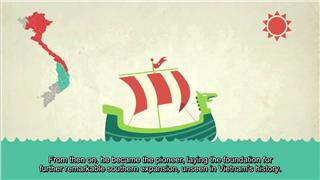

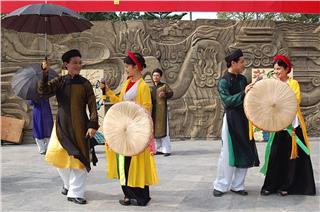
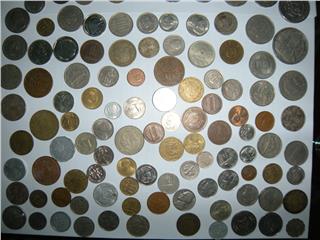
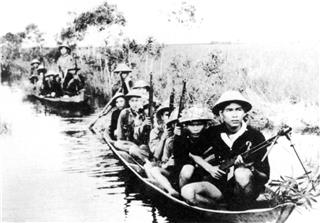
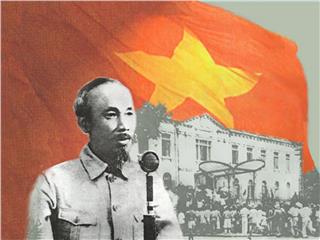
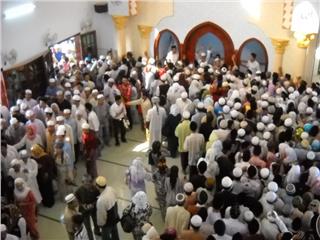

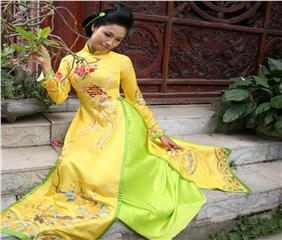
Dao ethnic people in Vietnam originated from China. Due to many historical upheavals, they immigrated to Vietnam. Based on cultural features and costumes, Dao ethnic group is divided into subgroups such as Dao Do (Red Dao), Dao Tien, Dao Tuyen, Dao Ho. Subgroups of Dao ethnic group in Vietnam have their own cultural identities but share the same origin, history, culture and ethnic consciousness. Dao people see marriage is the important event of a person.
Young couples are allowed to get married according to the principle “ngoai hon dong ho”. Marriage with at least 9 generation difference allows to get married. Remarkably, Dao ethnic people attach great importance to the principle of the age of the couples. Therefore, the bridegroom’s parents ask the fortune-teller to check the compatibility between their son’s age and bride-to-be’s age based on the rules of Tiangan Dizhi, and ying and yang.
If the young couple’s ages are compatible, the bridegroom’s family will bring betrothal gifts to the bride's family and fix the wedding day. After the betrothal ceremony, the bride is supposed to prepare new clothes for her and the bridegroom. The bridegroom’s prepares offerings, wine and meat for the wedding. Like other ethnic groups, Dao ethnic people in Van Yen district, Yen Bai province earn their living mainly through terrace farming. So far they have kept their cultural values, noticeably the striking features of the traditional wedding ceremony.
Once the wedding dress preparation finishes, the rituals of the traditional wedding ceremony start at the same time. The Red Dao brides stand out thanks to the horned hat only wore when escorting the bride to the bridegroom’s house. It is an indispensable item of bride’s costume. This special hat is made by the matchmaker. “Ba mo” plays a very important role in the wedding. While Kinh people call those matchmakers, “Ong mo” or “Ba mo” of Red Dao people only appears when the bridegroom’s family fixes the wedding day. From then on, “Ong mo” or “Ba mo” is even higher than those of the bride’s parents. Red Dao people consider the bride’s parents as guests. Therefore, “Ong mo” or “Ba mo” will take care of and decide all important things.
While “Ba mo” is making a horned hat for the bride, the shaman is doing rituals to give good luck to the bride. Trieu Thi Mui’s grandfather passed away, Red Dao people think that in the afterlife he was the one who makes sure that Mui’s wedding takes place well. Thus ancestor worship means worshipping the bride’s grandfather. The offering is a slaughtered pig, including its head, body, heart, liver. Its innards are place on the table in the middle of the ancestor altar.
After the offering ceremony, this pig will be cooked a treat to stand guests of the bride’s family. A magician conducts the ritual of ancestor worship to inform the God of earth that the bride going to live another house. These are the most important rituals conducted in the bride’s family. During the last minutes in her house, the bride is the person having most moods. Meanwhile, her grandmother teaches how to behave properly in her husband’s family. She is happy but anxious because in her eyes, the bride is still a child who may make mistakes.
Tomorrow morning, another ritual is conducted. On the wedding day the role played is more important than that of bride’s parents. Magicians act as the master of the ceremony, i.e. they take care of everything related to the wedding so that the wedding runs smoothly according to the traditional custom of Red Dao.
Dao people think all good things start from the early morning. Therefore, early tomorrow morning, when the dew is still standing on the grass, the quiet of the local mountains is awakened by the brouhaha of the wedding escort group. Young people in the group wear traditional costumes and animate a section of road.
About 7-8 houses away from the bridegroom’s house, the bride’s escort group stops to blow flute and beat drum. Red Dao people call a wedding that has no the music is a “deaf wedding”. A so-called large-scale wedding has the sounds of flute and drum. Remarried or poor couples often hold wedding without the music. That’s why the local people try their best for their wedding. Following their custom, the wedding escort group of the bride has to go through a fire and follow the footsteps of the music players to enter bridegroom’s house. Here the bride’s belongings are handed over to the relatives of the bridegroom.
While playing music, the wedding music band walks to express adoration towards the bride’s family. The music band, led by a player, walks in the principle including 3 clockwise rounds. 3 clockwise rounds mean “binding”, while 3 counter clockwise rounds mean “take off”. The bridegroom’s family considers the bride’s family as their guests. So it is needed to have an unseen string to bind.
Adoring music shows how the bridegroom’s family respects for the bride’s family. The unseen string helps consolidate connect the two families and the community. The music players bow to “Ong mo” or “Ba mo”. Then “Ong mo” or “Ba mo” responds and gestures to get farther into the bridegroom’s house: the music band goes first; the groups of men, women, and then the bride and the matchmaker.
At the threshold of the bridegroom’s house, members of the wedding escort group and the stop in the yard. The bride stands alone in front of the main door. The magician of the bridegroom’s family conducts rites to get out the bad luck. If the bride’s spirit is threatened, the magician has to solve it. Next the younger brother of the bridegroom will mat right at the middle of the room to receive the newly-married couple who then will experience the ritual conducted to ask the bridegroom’s ancestors to accept the bride. After this ritual, the magician conducts “hop can”. The magician uses magic to put the couple’s soul into 2 cups. Then he gives the cups for the bridegroom and bride. The pair of cups then is put upside down and placed on the altar. Since then the bride and bridegroom have officially become a couple with the ancestors as a witness to their marriage.
Next to the ritual to accept the bride is the ritual to name the bridegroom. This is one of the three names in the life of a Red Dao man. The name given at the wedding is not used daily because it is used in wedding rituals. The magician informs the ancestors that he has a name: that he is married; and that the ancestors support the couple and give birth to smart children.
Once the “hop can” ritual finishes, the bride’s parents appear. The bride and bridegroom will kowtow to them. Earlier, the magician and “Ong mo” or “Ba mo” play the important role in ritual wedding. Finally, everyone join the feast in the bridegroom’s family to wish the best things for the couple. The feast can be served in different times of the day. The couple’s relatives and friends in the village play games and give congratulations.
The wedding, a long-established ceremony, shows the distinctive cultural identity of Dao ethnic people. Today Dao ethnic wedding has changed because of the cultural exchange between ethnic groups. However, traditional culture features have been kept from generation to generation. In this way, the wedding is not only an occasion of family, village but it also helps pass the traditional values through generations.
Source: VTC10 - NETVIET

 Đặt vé máy bay cho người Việt?
Bấm vào đây
Đặt vé máy bay cho người Việt?
Bấm vào đây
Our service uses cookies for technical, analytical and marketing purposes. See our Cookie và Privacy policies for more information. If you agree to this, just keep browsing.


